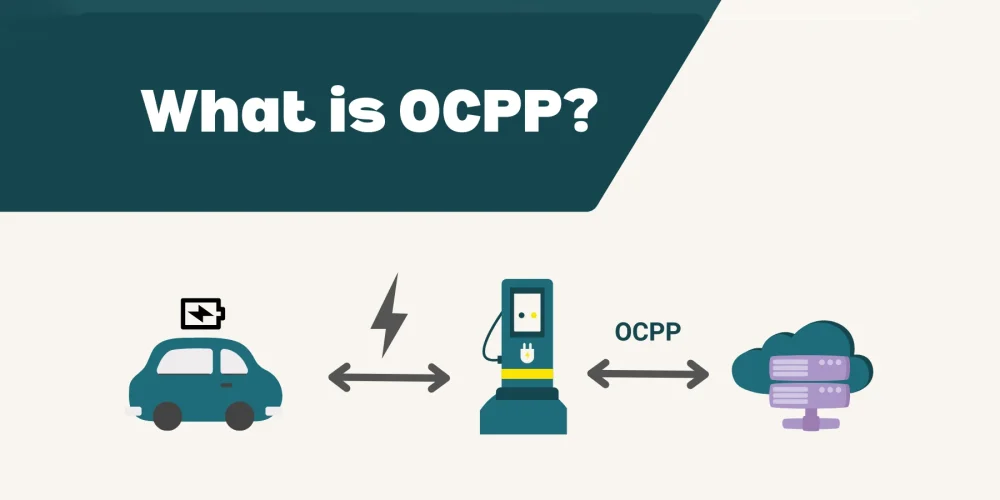
OCPP, short for Open Charge Point Protocol, is the shared language that lets electric vehicle chargers and management software communicate. It was developed by the Open Charge Alliance therefore chargers from different brands could operate together seamlessly.
The protocol defines how data moves between a charging station and the system behind it. It handles tasks such as authentication, billing, and remote control. It is open-source, neutral, and free, meaning any manufacturer or operator can adopt it without restrictions.
OCPP keeps the EV charging world connected. Without it, every network would stay isolated, making charging far less convenient.
How does OCPP Work?
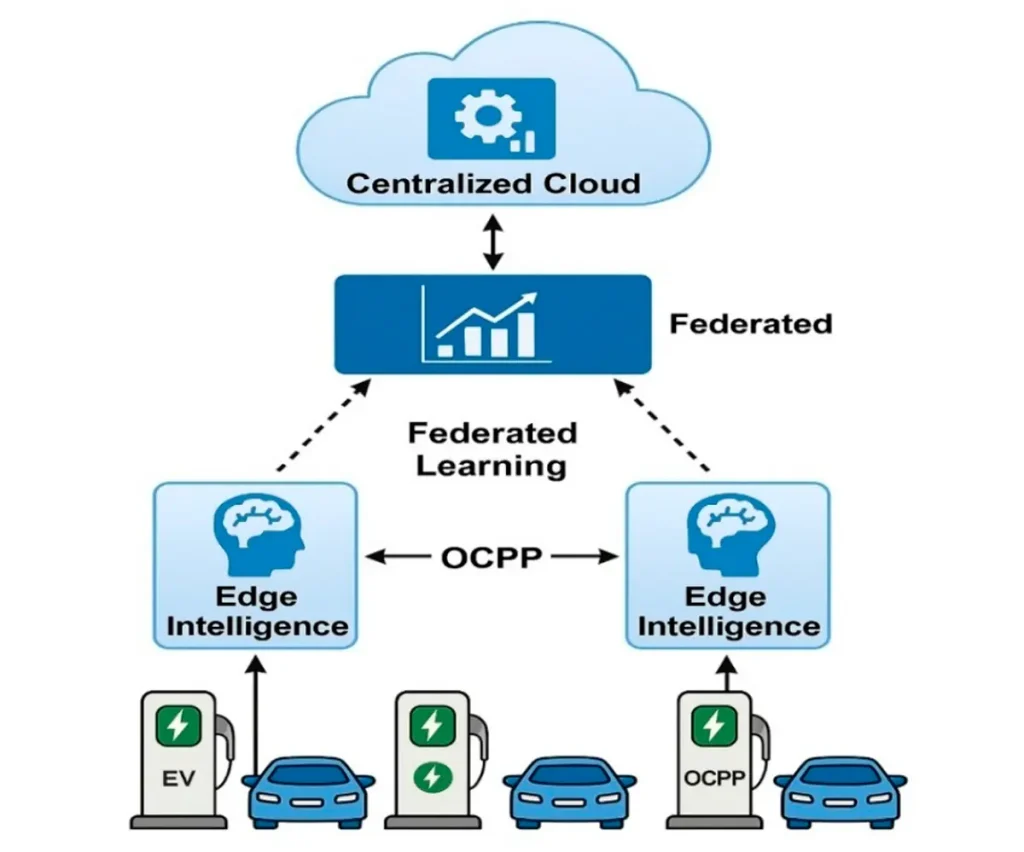
EV chargers and backend management systems.
In laymen’s terms, OCPP acts as the bridge between the charger you plug into and the software that manages the whole operation. When a driver connects a vehicle, the charger talks to a central system that verifies the user, starts the session, tracks the energy delivered, and records the cost. Every action follows a shared set of rules written in the OCPP standard.
The protocol works over the internet using WebSocket connections, which allow chargers and management systems to exchange information in real time. This setup helps the system respond instantly to commands such as starting or stopping a charge or sending an update about a fault.
Because OCPP is open-source and neutral, any manufacturer can build a charger that “speaks” it. That flexibility lets operators mix hardware from different brands on one network without compatibility problems.
Speaking of which, that’s one reason many modern chargers, including those from Duevolt, come ready with OCPP support built in.
Why OCPP Matters (The Case for Open Standards)
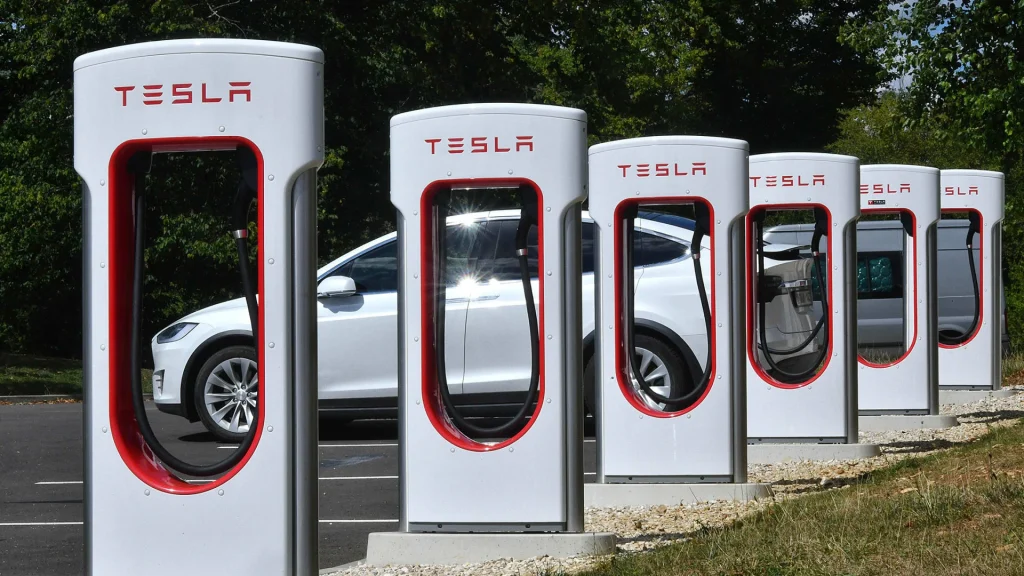
The electric vehicle market has been expanding fast, but growth means little without compatibility.
You see, if every manufacturer followed its own communication rules, charging networks would become a patchwork of systems that refuse to cooperate. OCPP prevents that from happening by giving the entire industry a common language.
For businesses, it means freedom of choice. Operators can use chargers from different brands on one network and switch software providers later if they need to. That flexibility reduces the risk of vendor lock-in and helps companies stay future-ready.
Governments and utilities benefit too. Open standards make it easier to scale public charging projects and integrate them with broader energy systems. On top of that, open protocols push costs down by inviting more competition and innovation.
As for drivers, OCPP keeps the experience simple. Plug in anywhere, start the session, and the network takes care of the rest. Frankly, that’s how seamless charging should feel.
The Evolution of OCPP (A Quick Timeline)
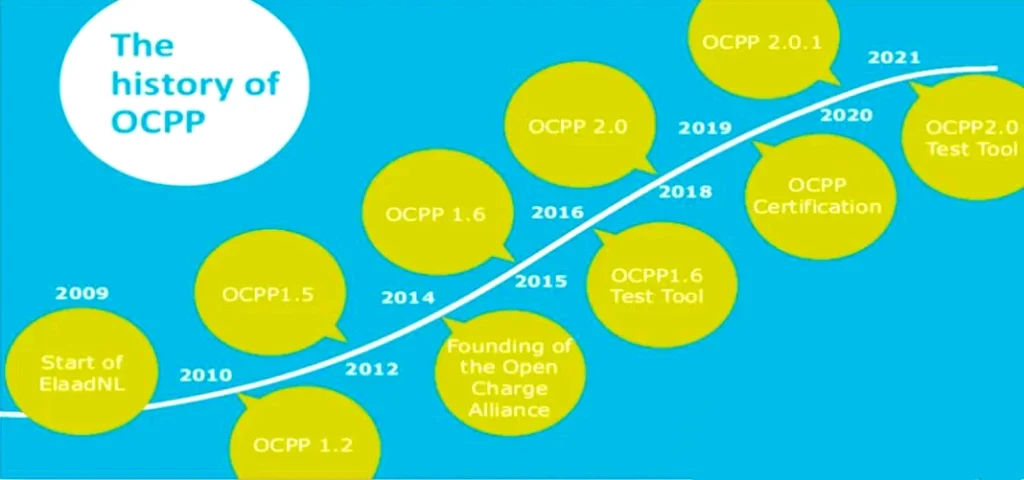
OCPP has come a long way since its first release in 2009. Each version has built upon the last, adding new features and strengthening the way chargers and management systems communicate.
- OCPP 1.2 (2009): The foundation. It handled basic charging session management and set the stage for open communication.
- OCPP 1.5 (2012): Brought better reliability and broader compatibility
- OCPP 1.6 (2015): Introduced smart charging, data encryption, and support for WebSocket connections, which improved real-time communication.
- OCPP 2.0 (2018): Marked a big leap forward with advanced security, better diagnostics, and early support for vehicle-to-grid functions.
- OCPP 2.0.1 (2020): Refined everything further. It added Plug & Charge through ISO 15118 integration and improved flexibility for complex energy management.
As of now, OCPP 1.6 remains the most widely used version, but interest in 2.0.1 has been growing.
OCPP vs Custom Communication Protocols
| Feature | OCPP (Open) | Custom Protocols |
|---|---|---|
| Compatibility | Cross-brand support | Vendor locked |
| Scalability | Easily expands | Limited growth |
| Flexibility | Change platforms freely | Stuck with one vendor |
| Long-term ROI | High | Risky over time |
Some manufacturers prefer to develop their own closed communication systems. On the surface, that might sound efficient since a custom protocol can be tailored to specific hardware.
But there is a problem…
Those systems often trap users within one ecosystem, leaving little room to grow or switch later.
OCPP takes the opposite route. It is open, collaborative, and built for flexibility. Businesses can connect chargers from various brands through a single management platform and expand their networks without starting from scratch.
Quite frankly, that freedom moves the needle for operators who want control over their infrastructure.
Custom protocols may offer short-term optimisation, yet they rarely age well.
When the industry moves forward, these systems struggle to keep up.
OCPP, on the other hand, evolves through community input and global adoption. That makes it a rock solid choice for anyone who values longevity, transparency, and future readiness.
Why Does it Matter for Everyday User?
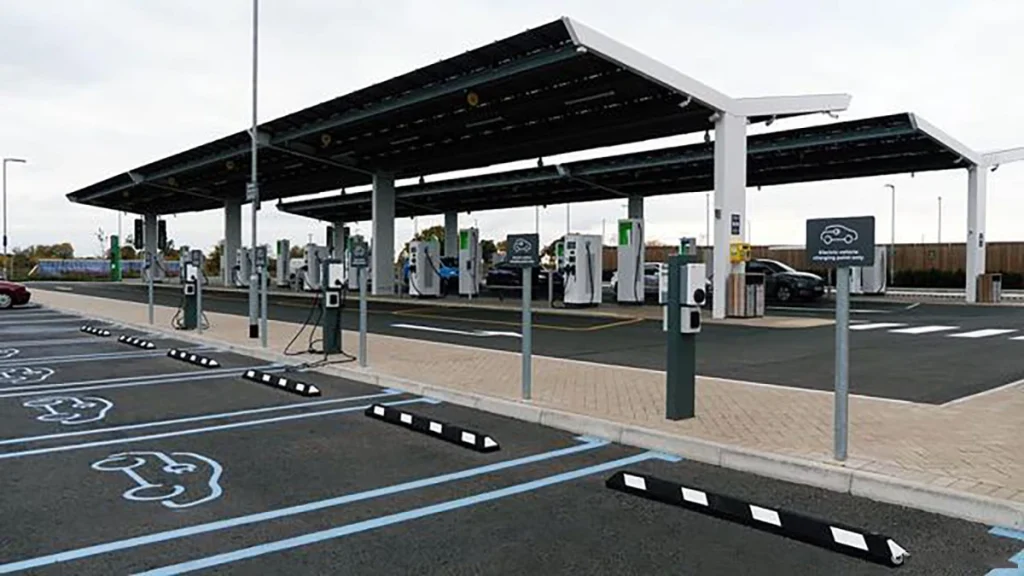
Take Tesla, for example. Its chargers don’t use OCPP. And people often raise a question “if you can still plug in and charge, why does it matter?”
Well, the thing is, a physical connection doesn’t mean a data connection.
Let’s unpack this…
1. Limited Smart Features
You can charge, sure. But the charger won’t communicate with your energy app, load-balancing system, or fleet manager.
With OCPP, you could link everything together — letting your car charge automatically when electricity rates are lowest. Without it, you lose that flexibility. It’s just plug in and charge.
2. Locked Ecosystem
A Tesla Wall Connector works seamlessly with Tesla’s app, letting you track usage or schedule charging.
But if you switch to a Polestar or Kia next year, that same charger won’t connect to your new car’s app or any OCPP-based platform. You’re essentially tied to Tesla’s ecosystem.
3. No Integration with Energy or Solar Systems
Non-OCPP chargers usually can’t connect with smart meters, solar inverters, or third-party billing systems. OCPP, on the other hand, allows all these systems to share data — enabling smarter, greener, and more cost-efficient charging.
4. Firmware Updates and Troubleshooting
With OCPP, updates and diagnostics can be done remotely through any compatible platform.
Non-OCPP chargers rely solely on their own brand’s servers, and once those stop being supported, updates often stop too.
5. Limited Future Support
If a brand ends its cloud service, your charger may lose all smart features.
An OCPP charger can easily switch to another backend provider without replacing the hardware.
So all in, a non-OCPP charger will still charge your car, but it’s like owning a smart TV that only streams from one app. It works, you just give up choice, flexibility, and long-term freedom.
Who Really Needs OCPP?
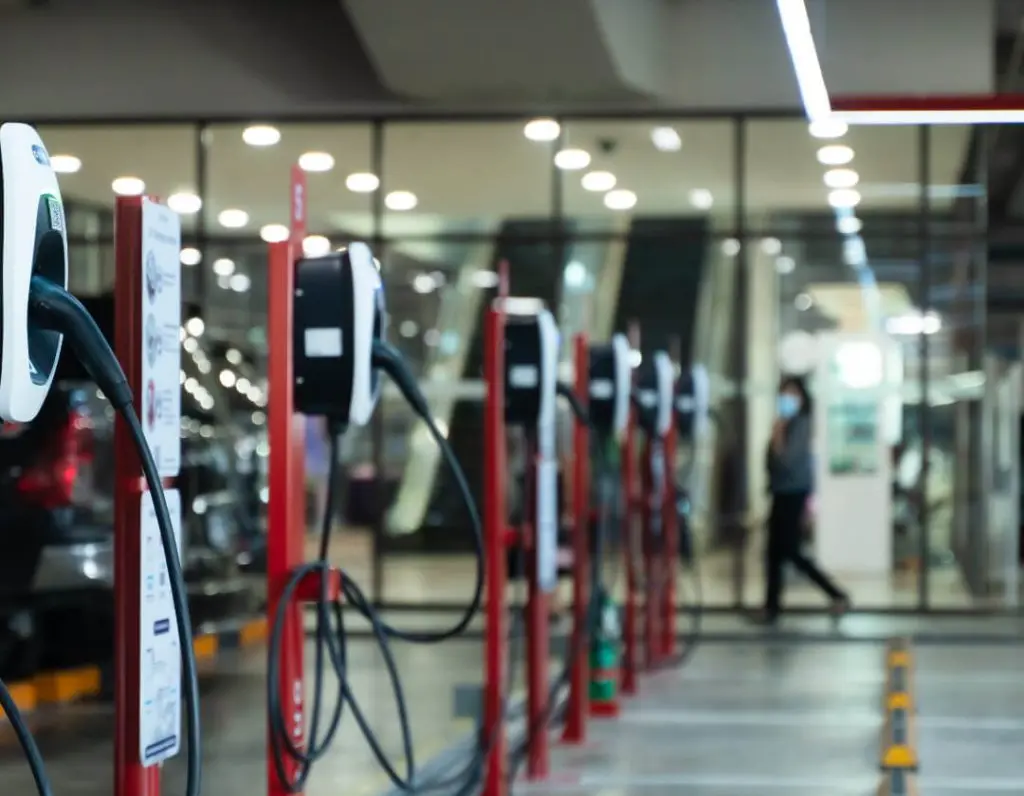
If you’re charging a single car at home, you probably won’t give much thought to communication protocols. But as soon as you scale up, OCPP starts to matter.
- For multi-EV households, it keeps chargers from different brands working together without fuss.
- For small businesses or Airbnb hosts, it allows remote control, usage tracking, and energy management — even when the hardware isn’t all the same.
- For fleet operators, it brings everything under one dashboard, simplifying maintenance and scheduling.
- And for public charging networks, it future-proofs operations while keeping software costs manageable.
That’s why an increasing number of operators — and smart charger manufacturers — now build OCPP support from the start.
Challenges and the Way forward
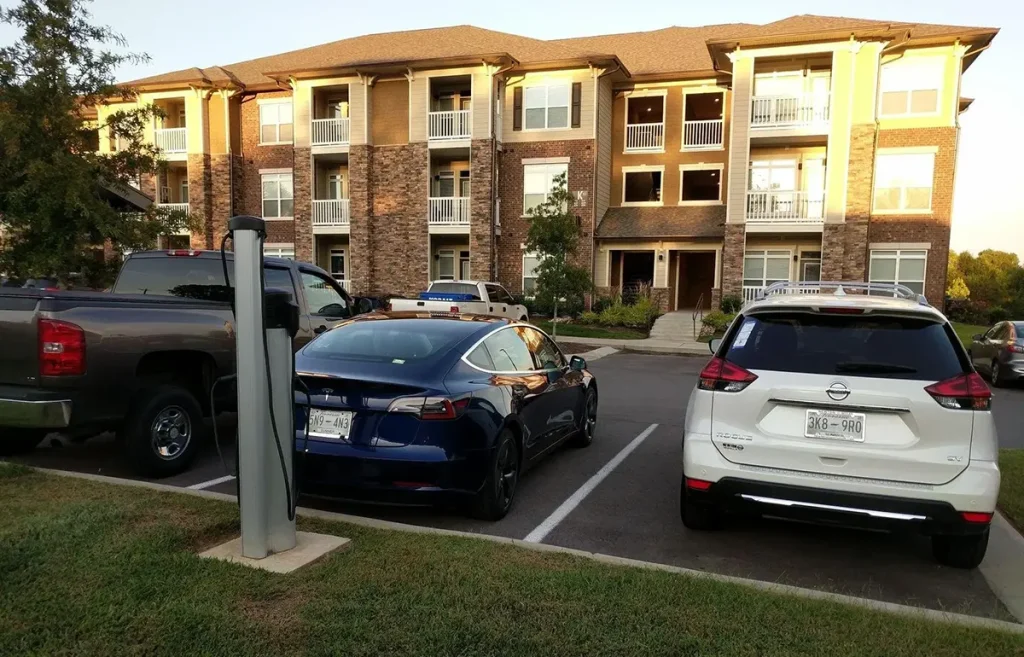
OCPP has made some remarkable progress over the years, but some hurdles remain. The latest version, OCPP 2.0.1, has been slower to gain traction because it is not backward compatible, meaning older systems built on previous versions cannot link to it without updates or new integrations.
Operators throughout the industry continue to rely on OCPP 1.6, which still performs reliably for most networks in operation today.
Version 2.0.1 adds advanced features such as Plug & Charge and Vehicle-to-Grid (V2G) support.
Plug & Charge lets a vehicle identify itself automatically, whilst V2G allows stored energy to flow back into the grid when required. These improvements show how the EV ecosystem is gradually becoming smarter and more adaptive.
Looking ahead, stronger cybersecurity, better diagnostics, and closer coordination between vehicles, chargers, and energy systems will keep shaping the protocol’s future.
The Open Charge Alliance continues to refine OCPP through collaboration and testing.
On the whole, the protocol has grown beyond a set of rules. It stands as the foundation of open and reliable electric mobility.
